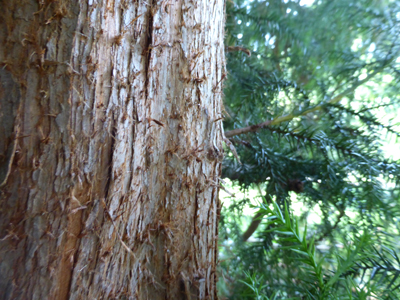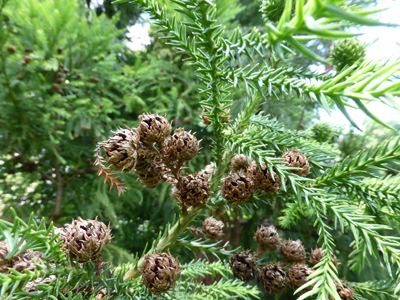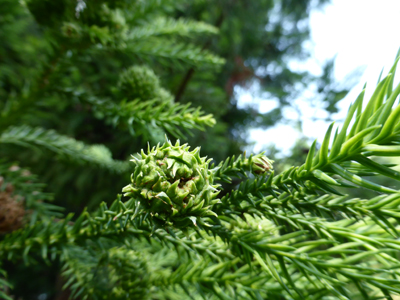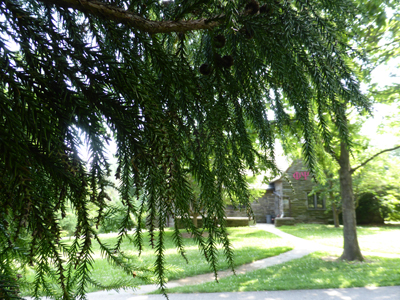 One perk of moving to the Philadelphia area from the Midwest is seeing the difference in plants that are grown in each locale. A case in point is Cryptomeria japonica, or Japanese cedar. Cryptomeria is a common landscape tree on the east coast, but I had only seen one before coming east. This prickly evergreen, incidentally the national tree of Japan, boasts over 200 cultivars, displaying various colors and habits. My favorite is ‘Sekkan sugi’, a full-sized cultivar noted for its dynamic coloration.
One perk of moving to the Philadelphia area from the Midwest is seeing the difference in plants that are grown in each locale. A case in point is Cryptomeria japonica, or Japanese cedar. Cryptomeria is a common landscape tree on the east coast, but I had only seen one before coming east. This prickly evergreen, incidentally the national tree of Japan, boasts over 200 cultivars, displaying various colors and habits. My favorite is ‘Sekkan sugi’, a full-sized cultivar noted for its dynamic coloration.
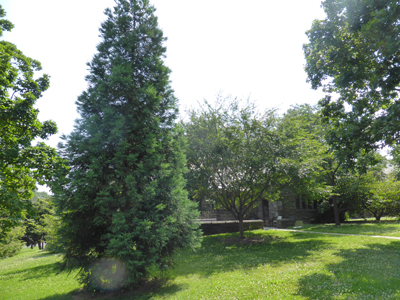
Japanese cedars of any cultivar are worthy trees in this area. They assume a stately, excurrent form and tolerate many soil conditions. photo credit: A. Auner
Japanese cedars of any cultivar are worthy trees in this area. They assume a stately, excurrent form and tolerate many soil conditions. Better yet, they bear wicked spikes in the form of awl-shaped leaves (like those of Juniperus, but bigger), which are arranged in spirals around the somewhat weeping branchlets. These are densely grouped into large sprays—as a former teacher of mine would say, you can’t throw a cat through it. This foliage pattern creates a fine texture, which is accented by spiky, round cones, forming in summer.
Another feature shared by Cryptomeria and Juniperus is characteristic bark: the barks of both genera peel in long, vertical strips. Cryptomeria (a single-species genus) thrives in Zones 6-8 (9) and is easy to keep healthy, provided that it is not exposed to drought or harsh winds.
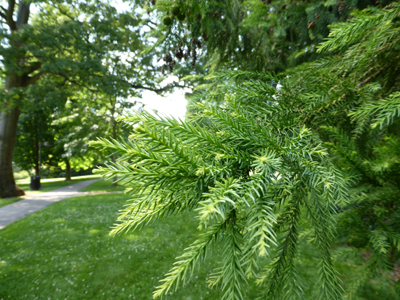
‘Sekkan sugi’ foliage starts out white-tipped in early spring, fades to nearly neon green during the summer and fall, and then takes on a bronze cast in winter. photo credit: A. Auner
The foliage of wild-type Japanese cedars is normally green with a slight blue tinge. Some cultivars of Cryptomeria are notable for enhancing this blueness (e.g. ‘Blue Form’, a specimen of which is located near the ‘Sekkan sugi’ in the Pinetum). ‘Sekkan sugi’, however, stands out markedly, as its foliage starts out white-tipped in early spring, fades to nearly neon green during the summer and fall, and then takes on a bronze cast in winter.
When individuals of this cultivar begin bearing cones in early summer, they start out the same bright green as the leaves. The effect of these colors is dramatic when coupled with the height of the tree—most sources list it as growing up to 35 feet, but the specimen in the Scott Arboretum Pinetum is substantially taller than this; however, ‘Sekkan sugi’ (which translates to “yellow cedar”) maintains a relatively columnar form, making it surprisingly compact in the landscape.
Between the spikes, the size, and the brightness of the foliage, C. japonica ‘Sekkan sugi’ makes a marvelous accent plant. It strikes the eye all year and changes with the seasons, so one does not tire of its blinding hues. It will stand out in nearly any setting, particularly as it begins its sunward stretch.

